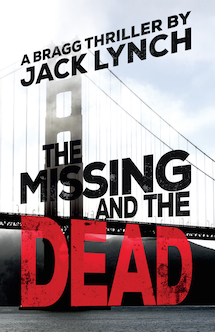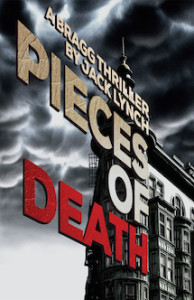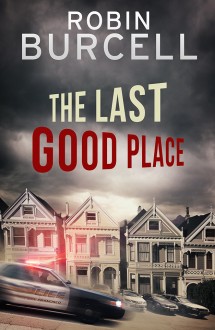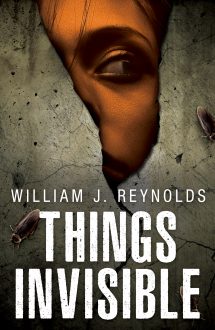
Jared Shurin reviews books for one of our favorite websites, Pornokitsch. Today he shares his admiration for the Bragg series of novels by Jack Lynch.
There’s no feeling in the world better than discovering a new series. Not just a good book, but a vast array of them. And, in this case, the series is Jack Lynch’s Peter Bragg– a San Francisco private investigator who combines angst and wit in the perfect proportion.
If that sounds familiar – perhaps like my beloved Travis McGee (John D. MacDonald) – it is, and part of the appeal of the Bragg series is that he is a West Coast McGee – a scarred-but-tender, manly-but-sensitive paladin of the dispossessed.
The series is composed of eight volumes. The first seven were published in the 1980s in an increasingly pulpy format, but garnered Edgar and Shamus nominations nonetheless. The eighth was self-published by Lynch in 2002, and provides an excellent capstone to the series. All eight have now been reissued with uniform (and quite sexy) covers and titles from Brash Books. (For more about the history of this series, see here.)
Like the McGee series, the Bragg books can be read in any order – but there is a subtle arc of character growth that can be detected if they’re read chronologically, especially in Bragg’s, um, romantic relationships. That said, like all good mysteries, these are self-contained – and there’s no harm done if you dive in to whichever book you find first.
The first book in the series, The Dead Never Forget (originally Bragg’s Hunch) has, perhaps, the most traditional of all the openings – a mysterious figure walks into Bragg’s office and hires him for a job. In this case, the figure is the (house-sized) goon of Armando Barker, a “retired” mobster who is worried about a series of increasingly gruesome death threats. He’s not so bothered about himself (he’s a mobster and he’s a got a goon), but Armando has a young daughter, and if the wannabe assassin is serious…
Bragg throws himself into the case with the best of intentions, but runs into a series of dead-ends. Investigating Armando’s quasi-legal present (a restaurant, a daughter, a mistress, etc) is getting him nowhere. But after a death or two, Armando opens up about his past – it seems that whatever is going on, it started in the small town of Sand Valley.
 Despite its California location, Sand Valley is Justified territory – and Bragg’s arrived at the worst possible time. As he pokes around in Armando’s past, Bragg gets mixed up the town’s political, social and criminal tensions. The “dodgy enterprises per capita” ratio in Sand Valley is extremely high, and Bragg has to choose his allies and enemies carefully. The finale is wonderfully explosive as it all kicks off at once.
Despite its California location, Sand Valley is Justified territory – and Bragg’s arrived at the worst possible time. As he pokes around in Armando’s past, Bragg gets mixed up the town’s political, social and criminal tensions. The “dodgy enterprises per capita” ratio in Sand Valley is extremely high, and Bragg has to choose his allies and enemies carefully. The finale is wonderfully explosive as it all kicks off at once.
That said, the pyrotechnics are a distraction. What The Dead Never Forget does most admirably is seed the idea of single, unknowable force that’s driving all the events of the book – a dark matter that’s wholly undetectable, except for the fact that Bragg knows it must there for everything else to make sense. As Sand Valley catches fire (in some cases literally) and things start blowing up, Bragg steadily homes in on this invisible factor. As much as I appreciated the razzle-dazzle of the cinematic action sequences, I found Lynch’s intricate plotting all the more impressive.
The second, The Missing and the Dead (first published in 1982) is easily my favourite of the series. Bragg is on the trail of another PI – a missing investigator from an insurance agency. Again, there are a dozen false (but interesting) leads: the investigator’s cases, his snotty sister, his new wife, his old girlfriends… Eventually Bragg winds up – in all places – at an artists’ colony, where he finds that otherinvestigators may have also been involved. What starts as a simple case becomes a convoluted one, and Bragg has no idea what’s coming for him.
However, what makes this book particularly interesting is that, from the opening pages, the reader knows. The prelude to The Missing and the Dead sets up a serial killer (an artistic one!) and even as Bragg pursues one lead after the other, we’ve already been set up with the “right” answer. Our semi-omniscience puts us in the enjoyable position of following two parallel investigations: watching Bragg go about his business and, at the same time, following the same clues to see if we can identify the killer first.
The fifth book, Speak for the Dead (first published as San Quentin), is notable as an example of the Bragg ‘formula’. The PI is introduced to his new case with a dramatic hook, then has a ticking clock to solve it. Often with a woman or two involved (because, because). In the case of Speak for the Dead, the hook drags Bragg to San Quentin: a foiled escape attempt has left a group of hard-core bikers holding hostages. Although official policy is “no negotiation”, they’re valuable enough that the warden has asked for Bragg to come up with an alternative plan.
 When Bragg talks to the prisoners – chilling, as the scenes inside San Quentin are remarkably atmospheric – he learns that their motivation for escape might be, well, “altruistic”. The Biker-in-Chief has a younger brother who is currently being investigated for murder. In turn for a ceasefire, Bragg promises to investigate.
When Bragg talks to the prisoners – chilling, as the scenes inside San Quentin are remarkably atmospheric – he learns that their motivation for escape might be, well, “altruistic”. The Biker-in-Chief has a younger brother who is currently being investigated for murder. In turn for a ceasefire, Bragg promises to investigate.
Again, Bragg winds up terrorising a small town – this time with deliberate insensitivity given the situation he’s left behind in prison. Bragg is always, as previously noted, the self-aware type of detective – prone to thinking about the impact that he has on people’s lives and the moral repercussions of his actions. With the accelerated time-line of Speak for the the Dead, he’s forced to put all that aside, and he plows through the town like a cannonball. Vampish teenagers, Nazi sympathisers, angry bikers, corrupt local authorities – Bragg uses and discards them all, and suffers the (largely internalised) consequences later.
It is also worth noting the final two books in the series (both to be reprinted in 2015), as, although separated by almost twenty years in the writing, they form a lovely pair. In Yesterday is Dead (first published as Seattle), Bragg returns to his past – the oft-referenced hometown of Seattle. It is perhaps the most McGee of all the series, as Lynch writes in MacDonaldian wistful tones about the modernisation of his hometown, as Bragg grapples with a (admittedly misplaced) nostalgia through. It is a homecoming on multiple levels as Bragg is in town to save a childhood friend and, as was inevitable, confront his ex-wife. Perhaps “confront” is the wrong word, as the conflict between them is – although present – rarely verbalised. Arguably one of the weaker mysteries, Yesterday is Dead is one of the best for exploring Bragg as a character. He’s a husband, a friend and a detective – but in Yesterday he’s also contrasted with the husband, friend and detective he was in the past as well. Yesterdayis about Bragg understanding how he’s changed over time, with the city itself providing the parallel metaphor.
Die for Me (published as Wolf House) again presents mystery with an unusual opening hook: a psychic calls Bragg and asks him to investigate a harrowing vision of bodies in a field. Although skeptical, Bragg takes the plunge. Before long, he finds himself pitted against a particularly vicious killer.
On one hand, Die for Me feels like an uneasy modernisation of a ‘classic’ mystery series – published in 2002, it has hand-wavey acknowledgements of the changes in the genre: a bit of fancy forensics, the psychic connection (remember when psychics were all the rage in thrillers? That was a thing), and, of course, the serial killer. The latter feels particularly awkward compared to The Missing and the Dead, which, despite being twenty years earlier, handles the notion of the serial killer in a more interesting way. There are also some clunky, if well-intended, conversations about feminism that would’ve been misguided in the 1980s and feel particularly out of place in 2002.
But, again, Bragg himself carries the story, and Die for Me provides an excellent, if open-ended, capstone to the series, with Bragg in, if not a better place, at least a more emotionally sound one. If Yesterday had Bragg interrogating the decisions he made in the past, Die for Me has Bragg question what he is doing right now, and despite the sacrifices he makes – the book (and series) ends with a pleasant feeling of affirmation.
With the first five books already reprinted and the final volumes on their way, Brash Books have done mystery readers an immense favour. These are engrossing mysteries – the perfect balance of fast-paced formula and carefully-crafted protagonist. Highly recommended to crime and adventure readers of all shapes and sizes, these are modern classics.


